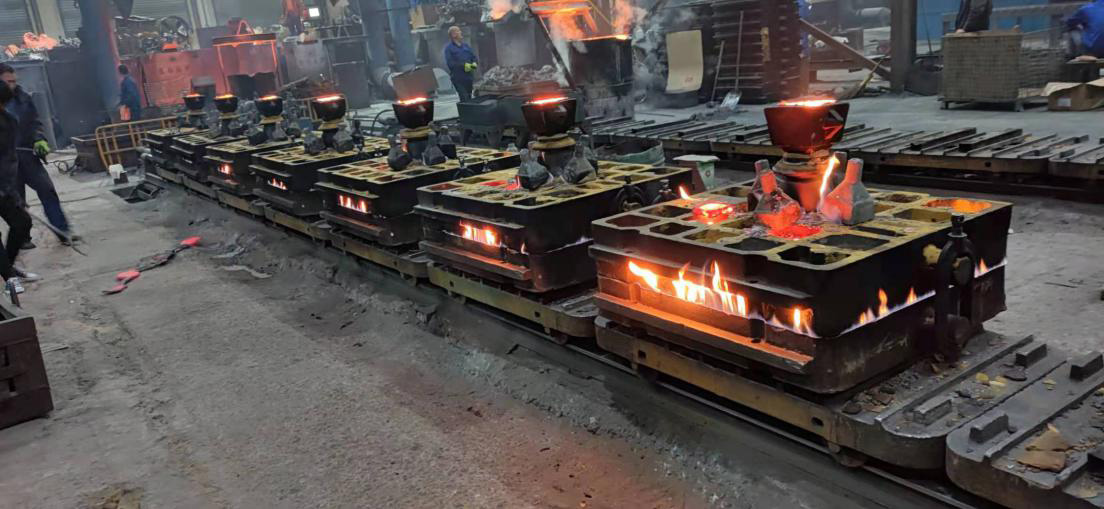Materials Used in Sand Casting
Sand casting is one of the most widely used metal casting processes, characterized by its versatility and cost-effectiveness. This ancient technique employs a variety of materials to create molds and produce metal parts, making it essential in various industries, from automotive to aerospace. Understanding the materials involved in sand casting can illuminate the efficiency and effectiveness of this manufacturing process.
1. Sand
The primary material used in sand casting is sand itself. Silica sand is the most common type of sand utilized due to its favorable properties, including high melting point, excellent thermal conductivity, and good permeability. The sand is typically mixed with a binder to enhance its strength and cohesion. The most frequently used binders are clay, which helps to bind sand grains together, and organic materials, which can improve the mold's ability to hold its shape. The ratio of sand to binder varies depending on the specific requirements of the casting process and the design of the mold.
2. Binders
Binders play a crucial role in the sand casting process, as they provide the necessary strength and stability to the sand molds. The two primary categories of binders used in sand casting are
- Clay-Based Binders Clay is the traditional binding agent used in sand casting, commonly in the form of bentonite clay. This natural material helps create a solid and permeable mold that can withstand high temperatures. Clay's ability to absorb moisture and its expansive properties under heat make it ideal for many casting applications.
- Chemical Binders In some cases, chemical binders are used to enhance mold strength and reduce the time required for curing. These binders can be activated by chemical reactions, allowing for faster production rates. They include phenolic resins and furan resins, which can provide stronger molds compared to traditional clay-based systems.
3. Additives
Various additives can be mixed with sand to improve its properties and the quality of the final casting
. Common additives includewhat materials are used for sand casting

- Seeding Agents These materials, such as graphite or carbon, can be added to the sand mix to enhance the surface finish of the casting and promote better release from the mold.
- Coloring Agents Various coloring agents can be introduced to the sand to assist in identifying different molds or to enhance the aesthetic qualities of the finished product.
- Moisture Regulators Additives that help control the moisture content of the sand are critical, as the right moisture level ensures proper bonding while maintaining mold integrity.
4. Core Materials
In many sand casting processes, cores are used to create internal features of a part. Cores are typically made from sand mixed with binders and are designed to withstand the molten metal's temperature. The core materials can vary, with options such as green sand cores (which utilize moisture-activated binders) and chemically bonded cores that set via heat or chemical activation, allowing for more complex internal geometries.
5. Metal Alloys
Finally, the type of metal or alloy used in the liquid state during the casting process is of paramount importance. Sand casting is compatible with a wide range of metals, including
- Ferrous Metals Such as cast iron and steel, which are widely used due to their strength and durability. - Non-Ferrous Metals Such as aluminum, copper, and bronze, which offer advantages like lighter weight and corrosion resistance.
Conclusion
In conclusion, the materials used in sand casting, from silica sand and binders to additives and core materials, play a crucial role in determining the quality and characteristics of the final casting. The choice of these materials impacts not only the mold's strength and durability but also the surface finish and dimensional accuracy of the cast part. Understanding these materials allows engineers and manufacturers to optimize the sand casting process, leading to efficient production and high-quality metal components tailored to specific applications. As industries continue to evolve, the innovations in sand casting materials will undoubtedly play a pivotal role in enhancing manufacturing capabilities.
Post time:Déc . 26, 2024 01:56
Next:Exploring Innovative Applications of Ceramic Sand in Modern Industries and Construction
